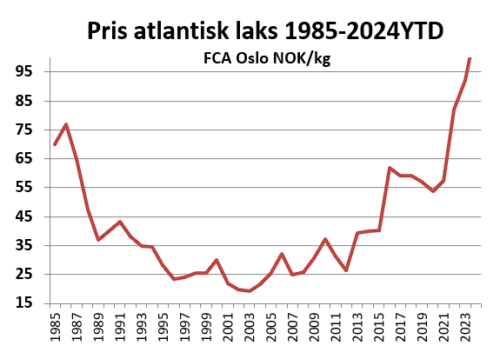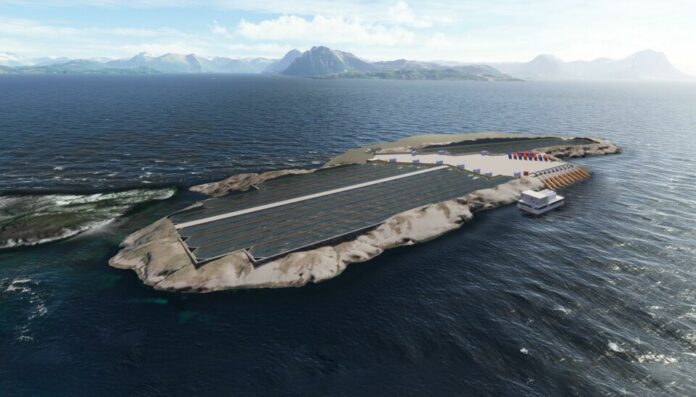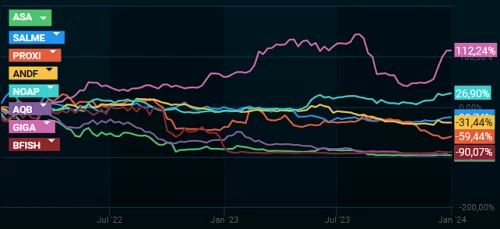Encouraging biological results and a robust salmon market bode well for the development of the land-based salmon sector, says iLaks editor and SalmonBusiness founder, Aslak Berge.
As we step into 2024, the salmon farming industry stands at a critical juncture. The debate between choosing land-based and traditional sea-based farming methods continues, fueled by recent encouraging biological results and the prospects of a consistently tight salmon market.
Read more: Atlantic Sapphire CEO Johan Andreassen resigns
The downfall of Atlantic Sapphire is not a unique tale in the land-based salmon farming industry. Other notable firms, including AquaBounty, BioFish, and Proximar, have similarly witnessed their investors grappling with considerable financial losses.
Venturing into New Waters
This sector is navigating through a multitude of challenges, spanning biological and technological hurdles. The venture into large-scale land-based facilities represents a journey into relatively unexplored terrain.
In the past few years, securing financing for these ambitious projects has grown increasingly difficult. The landscape has shifted from an era of easy funding to a climate marked by higher interest rates and risk premiums, leading to greater selectivity among investors and a noticeable tightening in bank lending.

A prevalent issue among these players is the struggle to secure necessary capital, consequently stalling their construction and expansion efforts.
Meanwhile, escalating expenses, particularly in utilities and key construction materials like steel and concrete, have intensified the challenges in investment and financial strategy, prompting some companies to abandon their pursuits altogether.
Silver Linings in a Clouded Sky
Despite these obstacles, there are glimmers of hope within the industry. Companies such as Salmon Evolution, Nordic Aqua Partners, and Samherji, albeit in their nascent stages and managing small-scale production, have showcased notable biological successes. Andfjord Salmon and Danish Salmon are on similar promising paths, with the latter anticipated to reach profitability in 2023.
These firms have achieved notable growth and maintained low mortality rates, all while managing modest harvest volumes. This trend is expected to accelerate in 2024, potentially solidifying these early biological triumphs as more than mere anomalies in the industry.
Read more: Biomass doubles for Salmon Evolution while production costs begin to fall
Enhanced Market Dynamics
The current state of the salmon market is playing a pivotal role in enhancing the appeal of land-based farming. Characterized by a steady supply and a lack of significant production increases this year, the market is witnessing a robust and ever-growing demand that surpasses other protein sources. This rising demand is projected to propel the market growth by approximately 100,000 tons each year.
The intersection of this static supply and burgeoning demand has catalyzed an uptick in salmon prices. The market is now more conducive to salmon production at a higher price range of NOK 90-100 per kilo, compared to the previous NOK 60-70 range.
Taking a cue from these dynamics, the UK’s Aquacultured Seafoodis planning to establish a land-based facility in Grimsby. With an investment of $125 million, their goal is to produce 5,000 tons of salmon, matching the output of a standard Norwegian fish farm.
Read more: Grimsby’s $125 million land-based salmon farm set for approval

Expensive Growth?


